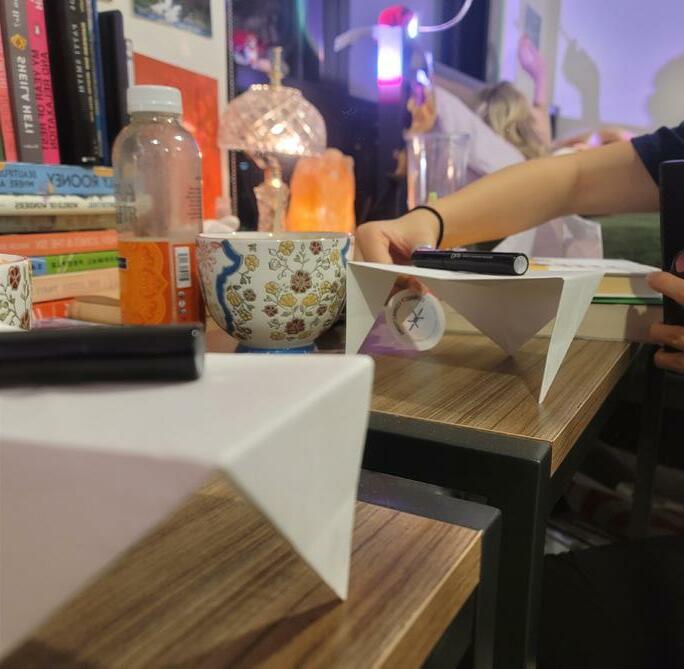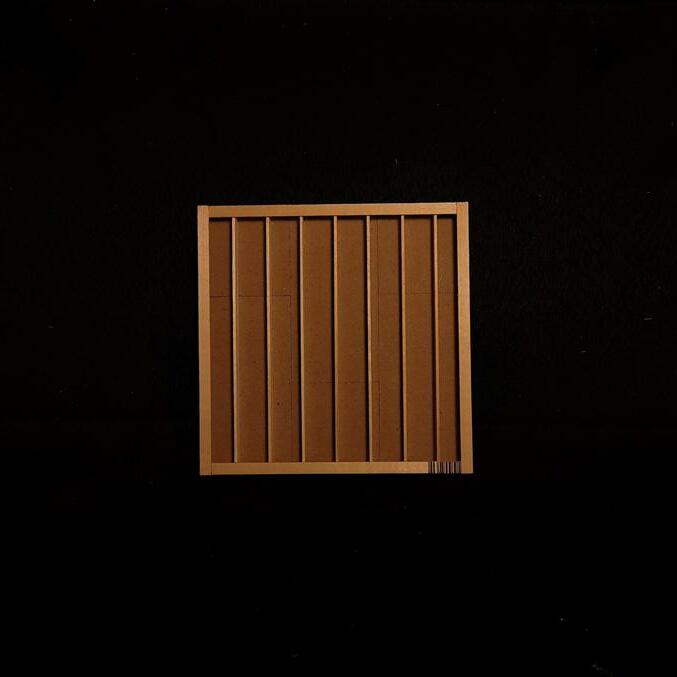
1 minute read
4 braced frame exercise
This cube was not able to hold up small scissors nor a board marker. Though not photo documented, the frame failed due to twisting and member failures.

Advertisement


1st Attempt Observation
While observing the cube under the weight of the sketchbook, I discovered what role the diagonal braces had for the cube. I had initially thought the brace would prevent the cube from bending in the direction the brace was glued in, but as shown in Figure b, the diagonal brace would bend, and the original vertical structures of the cube would still fail like it would without the brace. Instead, as shown in Figure a, the diagonal brace prevented the cube from expanding outwards, and it prevented the corner that seemed unsupported by the vertical brace, from failing, and the cube retained its shape. Using this logic I added 2 more diagonal braces. The image below shows the completed cube, and it was able to hold up the notebook. It was a decently weighted notebook and was able to hold it up stably

This attempt was able to hold up a board marker, but was only able to hold up scissors in a very specific position. Unfortunately I was not able to recreate this position, but I moved onto the heaviest object. This shows my first attempt to place a small notebook on the cube. The main structures of the cubes were twisting and the support structures were bending, resulting in the cube being unable to hold the book up.
F Inal Attempt
For the last alteration, I added supports to the corner joints with tape. This held up the notebook even more stably. However at this point, the pa per had creases in it that made it somewhat weaker than it had been before, and there were certain positions that would make it lead to failure.







